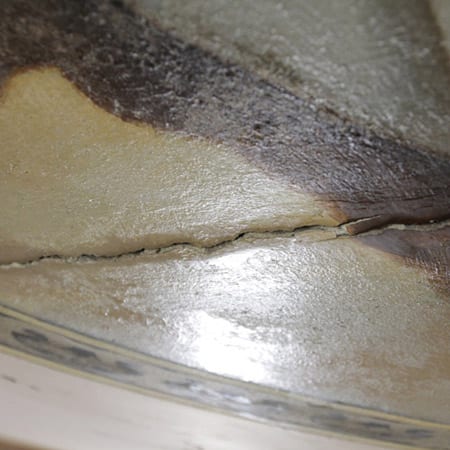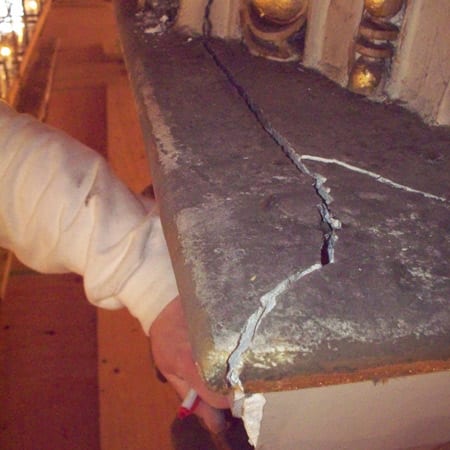Demystifying the Plaster Survey: A Look At Process
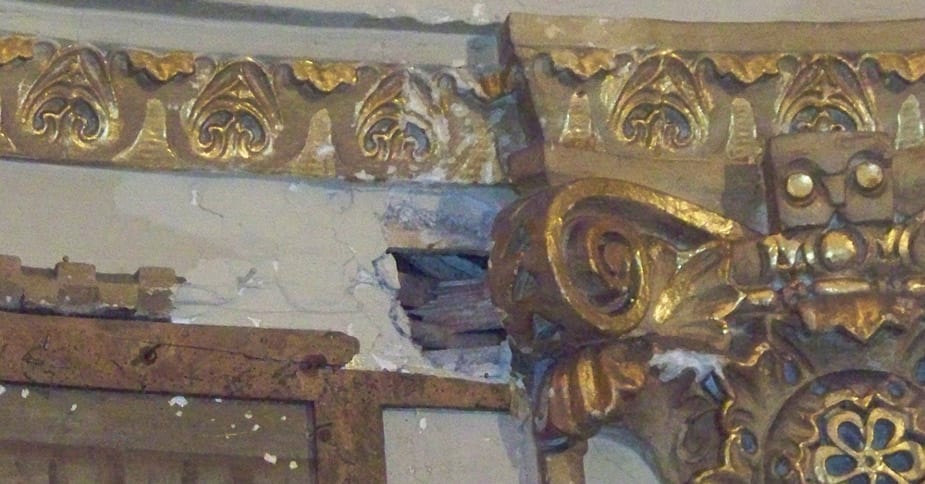

Why is plaster falling from the ceiling? Why is the plaster cracking? How do I fix this apparent problem? Will it be expensive? Will it be disruptive to the space or to other work in the building?
These are all common questions that we hear from owners and architects who have historic plaster in their structures. Our recommended solution is to conduct a Plaster Conditions Survey, an affordable way to learn the answers and identify the next steps you should take.
WHEN TO CONDUCT A PLASTER CONDITIONS SURVEY
Generally speaking, there are three primary reasons that we’d typically recommend a plaster survey: Your plaster is failing, you are planning new structural work to your building, or you are planning other decorative work.
Failing Plaster
Plaster fails for a variety of different reasons. Water damage, age, and poor ventilation are among the most common causes.
A plaster survey is an analysis that determines the cause of the failure in order to explain the effect. The survey also provides the means to establish an efficient plan of action to properly repair the damage. Sound and secure plaster is integral to the safety of a space and the preservation of the building. Improper application or ongoing damage often results in falling plaster and poses evident danger to individuals that frequent the building. Delay in repair does not keep the deterioration at bay.
New Construction & Aging Plaster
A plaster survey can prevent problems when structural changes involving AC installation, HVAC, lighting, etc. or when decorative work is in the planning stages.
Structural changes can stress the walls with added weight and wind currents, rail stations and any kind of disruptive vibrations to the building can also cause plaster to crack and fail. Over time plaster weakens. During a plaster survey in many old buildings, an inspection of the plaster keys often reveals the disintegration of the plaster (examples below) or the survey may be scheduled when the historic interior begins to show signs of plaster failure at the keys when cracks in the surfaces become visible or worse, chunks of plaster falling from the ceiling.
Traditional plaster methods cost about the same as newer materials and are far superior for repairs in older buildings because the structure requires materials that are compatible. A plaster survey can determine the appropriate material needed to repair and ensure a lasting result. The goal of plaster restoration is to cease the cycle of well-intentioned short term repairs and provide a long term solutions. These quick repairs do not save money in the long term and often cause greater damage to the building.
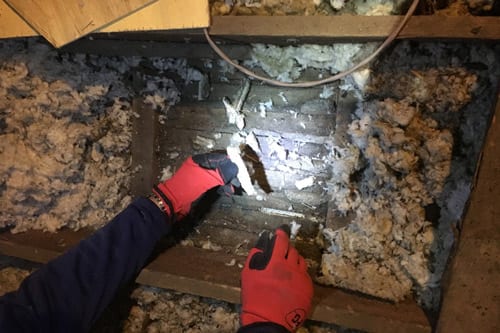

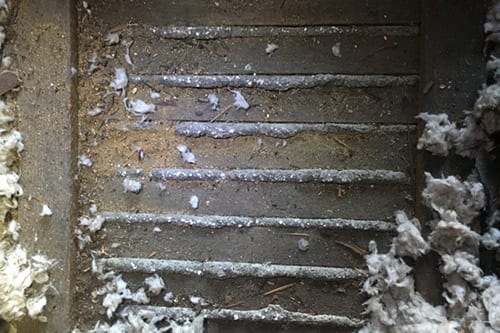

Plaster & Decorative Paint
Even if your plaster is not at risk of failing or you are not planning to make structural changes to your building, if you have other decorative work in the planning stages (for example, decorative painting, wood graining, or other finishing) it may make sense to conduct a plaster survey at the same time.
What to Expect from a Plaster Conditions Survey
Generally, a plaster survey requires one to three days onsite for a plaster professional to assess the condition of the plaster, the lath supporting it, and other elements. The time required depends upon the location of the damage, whether the assessment requires a lift or scaffolding and extent of the area to be examined.
After an onsite visit, a study in the lab determines the exact nature of the plaster in order to better understand the history of the structure and the plaster itself. Once the information from the survey is gathered and the lab analysis is complete, the findings are compiled into a report that includes archival research that sheds light on the original plaster installation and any previous repairs.
The report provides the answers: What the cause of the damage is, as well as a recommendation for the scope of the repairs, be it reinforcement or replacement of the plaster, in addition to an estimate on the cost of the repairs.
The cost for a plaster survey depends on the extent of the project. A very complex plaster failure with complicating factors such as need for extensive staging, or damage over a large area of highly decorative plaster more expensive than a straight forward survey.
Despite this cost, the plaster survey saves money in the long run because it eliminates guesswork, trial and error, and the uncertainty a quick fix leaves behind. Additionally, the plaster survey provides a roadmap for the project, budgets and accurate estimates of time and material required to restore the damaged plaster.
